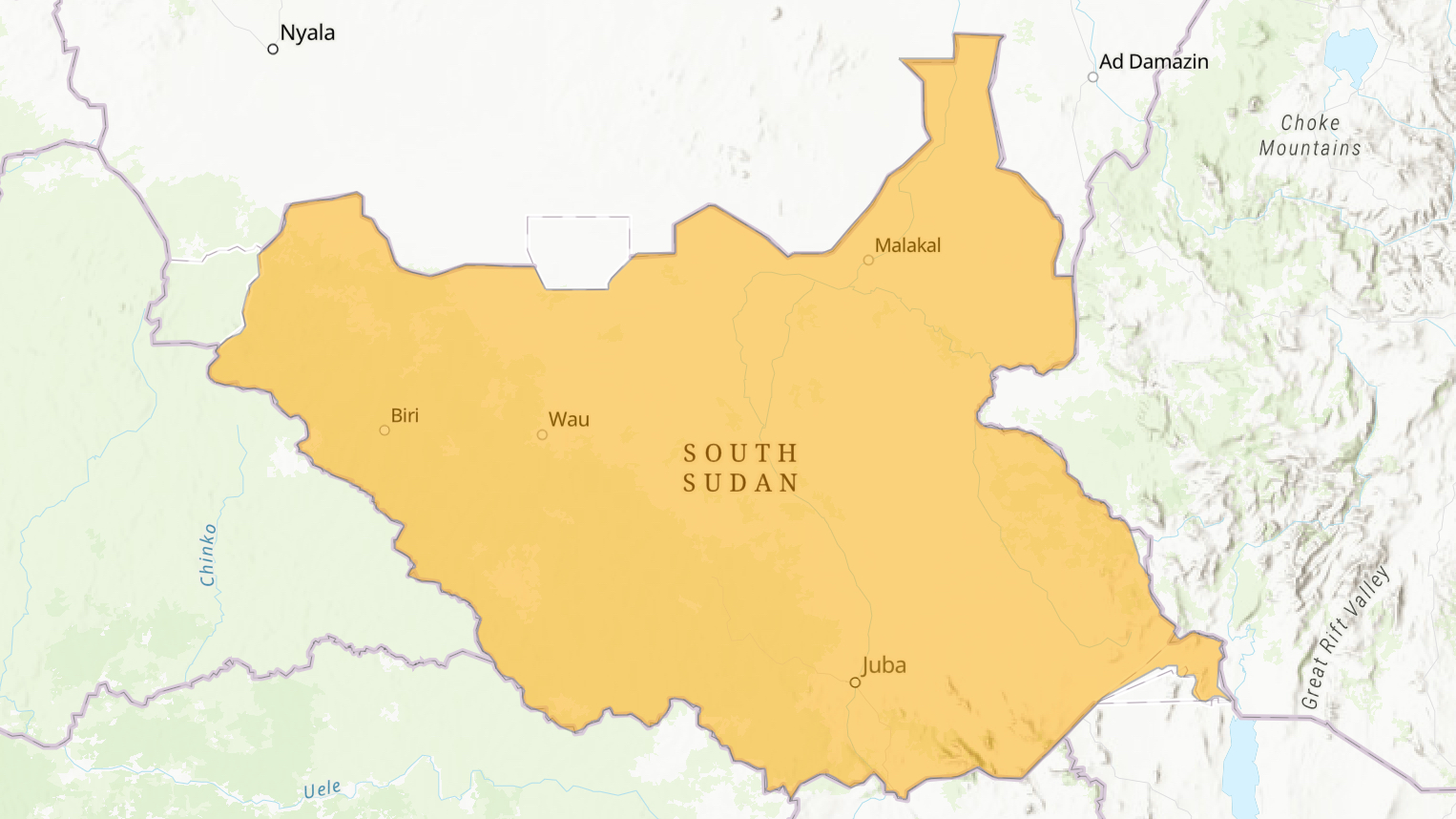Protracted armed conflicts in the Horn of Africa region have led to a surge in armed violence throughout South Sudan. Furthermore, the armed conflict against South Sudan dissident armed forces, which began in 2013 and remains ongoing, has made ammunition management activities difficult to implement in the country.1 Cases of ammunition trafficking and diversion remain high. The disputed region of Abyei is another source of conflict contributing to ammunition flows across Sudan and South Sudan.2
The African Union; the Regional Centre on Small Arms in the Great Lakes Region, the Horn of Africa and Bordering States (RECSA); the Multinational Small Arms and Ammunition Group (MSAG); the Bonn International Centre for Conflict Studies (BICC); and the UN Mine Action Service (UNMAS) are working on the ground to support the through-life management of ammunition, in collaboration with the government of South Sudan. Efforts have included training military and police forces in weapons and ammunition management to help prevent the diversion of ammunition and reduce the risk to communities from accidental explosions, organising high-level weapons and ammunition management awareness meetings with South Sudanese security forces, collecting and destroying obsolete weapons and ammunition, and providing policy guidance on the physical security and stockpile management of ammunition.3
1 “Civil War in South Sudan – Global Conflict Tracker,” Council on Foreign Relations, May 12, 2022, https://www.cfr.org/global-conflict-tracker/conflict/civil-war-south-sudan; "South Sudan," Rule of Law in Armed Conflicts Project (RULAC), Geneva Academy of International Humanitarian Law and Human Rights, updated June 13, 2019, https://www.rulac.org/browse/countries/south-sudan#collapse1accord.
2 Emilie Broek, Katongo Seyuba and Kheira Tarif, “Abyei Offers Lessons for the Region on Climate-Related Security Risks,” Stockholm International Peace Research Institute, September 23, 2021, https://www.sipri.org/commentary/blog/2021/abyei-offers-lessons-region-climate-related-security-risks.
3 “Ammunition Management Activity Platform (A-MAP),” GICHD, 2023, https://a-map.gichd.org.
Launch the country dashboard
Further information
Accidental explosions
Since the Small Arms Survey began collecting data in 1979, four accidental explosions have been reported in South Sudan.
Table 1. Accidental explosions in South Sudan (1979–2021)
| Year | Location | Owner/manager | Deaths | Injuries |
| 2013 | Juba | State (other) | 0 | 0 |
| 2008 | Kegulu | Non-state (actor) | 0 | 1 |
| 2006 | Juba | State (other) | 2 | 10 |
| 2005 | Juba | Non-state (actor) | 27 | 75 |
Source: “Unplanned Explosions at Munitions Sites (UEMS) Database,” Small Arms Survey, updated December 15, 2021, https://smallarmssurvey.org/database/unplanned-explosions-munitions-sites-uems.
Cases of diversion
Numerous cases of diversion have been reported since 2000 in South Sudan.
Table 2. Cases of diversion of arms, ammunition and explosives in South Sudan since 2000
| Year | Location | Description |
| 2015 | Gudele/ Gureyi | Unknown armed gunmen stormed into a police station and stole weapons from a store in Gudele, Juba. |
| 2014 | Rumbek, Lakes State | 19 assault rifles, 17 RPG launchers, 19 machine guns, and over 6,000 cartridges of ammunition were stolen. |
| 2013 | Gumuruk, Jonglei | Following an attack on a convoy, 7 assault rifles and over 500 cartridges of ammunition were stolen. |
| 2013 | Akobo, Jonglei | More than 40 assault rifles and more than 10 machine guns were stolen, along with 22,000 ammunition cartridges. |
Source: “Guns Stolen from Gudele Police Station,” Radio Tamazuj, August 15, 2015, https://radiotamazuj.org/en/news/article/guns-stolen-from-gudele-police-station; Eric G. Berman and Mihaela Racovita, Under Attack and Above Scrutiny? Arms and Ammunition Diversion from Peacekeepers in Sudan and South Sudan, 2002–14 (Geneva: Small Arms Survey, 2015), https://www.smallarmssurvey.org/resource/under-attack-and-above-scrutiny-arms-and-ammunition-diversion-peacekeepers-sudan-and-south.
Disposal
Insufficient information on the disposal of ammunition in South Sudan.
Needs
To further enhance safe and secure ammunition management, the following needs have been identified for South Sudan:
- Development or refinement of standards and procedures on stockpile management; and
- Capacity development for the destruction of surplus stockpiles.
Source: South Sudan, National Report on the Implementation of the Programme of Action on Small Arms and Light Weapons (PoA) and the International Tracing Instrument (ITI) (New York: Permanent Mission of South Sudan to the UN, 2020), https://unoda-poa.s3.amazonaws.com/reports/SSD-English-1046-SUBMITTED.pdf.



